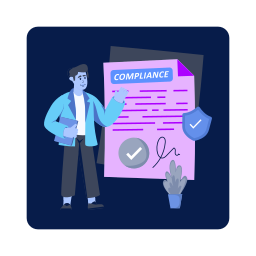What are the Common Automation Compliance Challenges RPA Leaders Face? Lessons From the Front Lines
A major point of focus for the automation community has centered on the growth of artificial intelligence (AI) and generative AI in automation design and delivery.
AI is poised to radically and rapidly transform the way work is done, and automation will not be immune to those changes. There will undoubtedly be efficiency gains and benefits to be realized, however generative AI in automation will also introduce new complexities; every new technology always does.
One of those complexities – which is already a challenge in and of itself – is ensuring automation practices remain compliant. This article examines the current automation compliance challenges that RPA (Robotic Process Automation) leaders face. It’s crucial to address those challenges now because, with the growth and adoption of generative AI in automation, they will become harder to control, and new ones will arise.
5 Common Automation Compliance Challenges
#1 – Data Privacy and Security
Automations normally process sensitive data in many cases. Handling this type of data can pose significant privacy and security risks if not managed properly.
RPA industry leaders must ensure that their bots comply with data protection regulations like the General Data Protection Regulation (GDPR) in Europe and the California Consumer Privacy Act (CCPA) in the United States. Organizations that operate in heavily regulated industries have a host of other regulations, controls, and compliance mandates to meet, which further complicate the effort to remain compliant.
Automation programs are tasked with implementing the measures to secure the data their bots process, manage consent, and ensure that the data handled by their bots aligns with legal requirements.
From an RPA compliance perspective, that’s why automation documentation is so important. It provides a quick way to review how data is being handled and can be easily produced in the case of an audit, whether internally or externally triggered.
#2 – Audit Trails and Transparency
Maintaining transparency in automated processes is crucial for RPA compliance, especially for organizations in finance and healthcare. Those industries have regulatory bodies that demand clear records of all transactions and decisions.
Automation solutions must be designed to log activities and decisions made by bots, creating comprehensive and immutable audit trails. Clear audit trails are another example that reinforce the need for detailed and accessible automation documentation, which not only dramatically aids regulatory compliance, but also accelerates and simplifies monitoring bot performance and diagnosing support issues to minimize bot outages.
#3 – Standardization and Control
With the rising adoption of generative AI in automation with tools like Microsoft Copilot, one of the risks we’ve continually warned about is automation sprawl. Automation sprawl is business users' unhinged production and delivery of bots as automation becomes more accessible with AI assistance.
The danger is that automation sprawl can lead to decreased quality in bots being pushed into production as oversight and control are compromised, as well as compliance risks if standards and best practices aren’t enforced and followed.
RPA industry leaders must establish and enforce standardized practices to develop, deploy, and manage bots to ensure compliance and high quality. This involves establishing governance frameworks to oversee automation design and delivery to ensure quality is being prioritized, along with regulatory compliance.
#4 – Integration with Legacy Systems
A common use case for automation is to bridge the gap between modern applications and legacy systems. Integrating solutions to address that need can introduce complexities where compliance is concerned, especially if those legacy systems have outdated RPA compliance protection measures.
Ensuring that both old and new systems comply with current regulatory requirements is most certainly a challenge for automation leaders, and it can become even more complicated as the use of generative AI in automation grows.
#5 – Scale and Change Management
As automation programs scale, the complexity of managing changes and updates in automated processes will naturally lead to a compliance gap. Initially, compliant bots and systems have a good chance of becoming non-compliant over time.
Automation leaders must implement robust change management practices to ensure that updates or scaling automation do not violate existing compliance frameworks, furthering the need for detailed automation specifications and documentation.
Conclusion – Navigating the Future of Automation Compliance
As artificial intelligence reshapes automation, compliance and policing regulatory requirements will emerge as a significant challenge. The integration of generative AI in automation has the potential to both power efficiency and complicate meeting stringent and clear regulations.
Automation leaders must now undertake the difficult mandate of navigating these evolving compliance complexities, ensuring that data privacy, security, and operational transparency are maintained.
With AI’s expansion into automation, tasks like managing and maintaining audit trails, standardizing automation design and delivery, and bridging the gap between legacy and modern systems require real oversight. To harness AI’s potential and inevitable marriage with automation, leaders must implement and enforce robust compliance frameworks to secure the integrity of their automation practice in an increasingly regulated landscape. Watch this space as our next article will explore how automation leaders can overcome these exact challenges.
Share this
Recent Stories
Unlocking the Full Potential of RPA Migration with Blueprint Assess

How to Overcome the Most Common Automation Compliance Challenges



